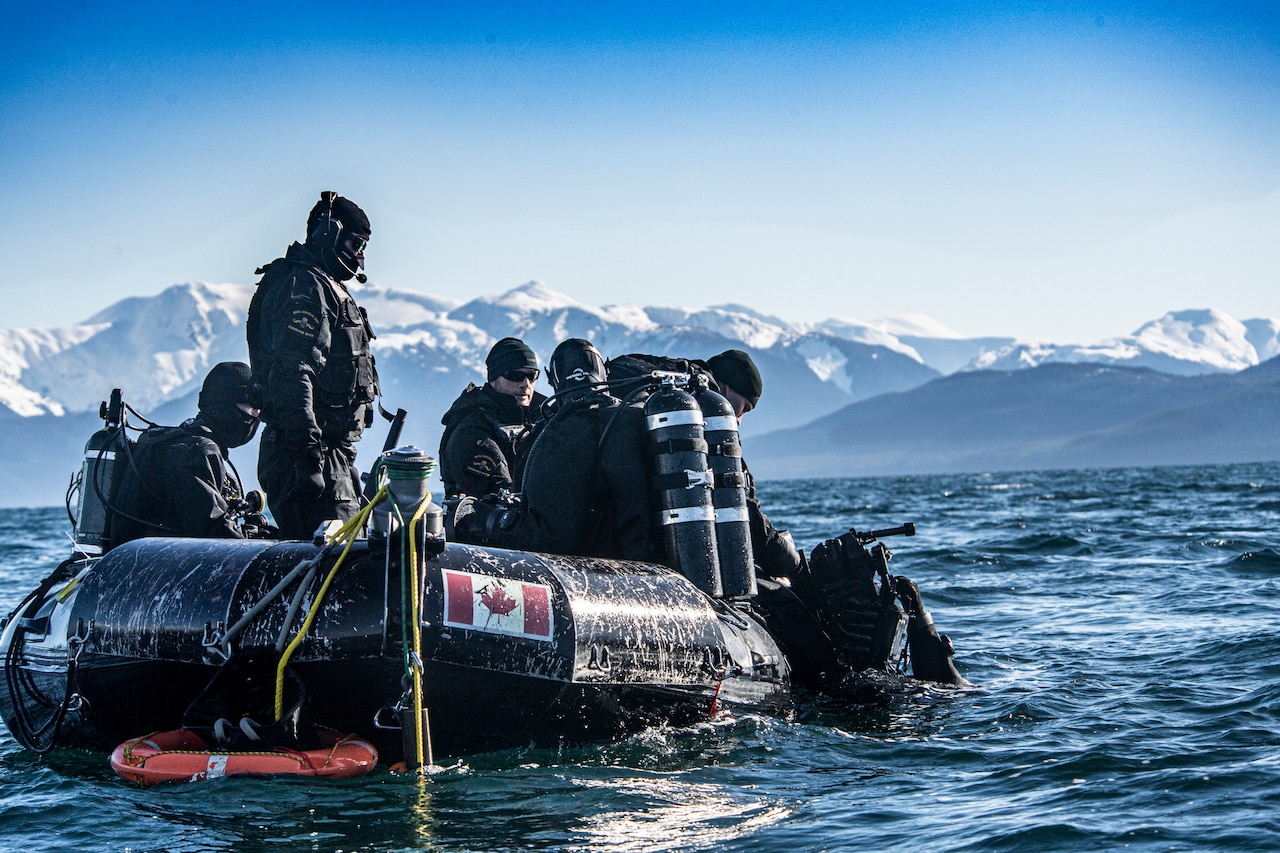
[ad_1]
The U.S. Northern Command is responsible for protecting the U.S. homeland. Domain awareness is a major part of defense, and it’s in President Biden’s 2023 budget request currently before Congress.
“What … challenges us is the unknown,” Air Force Gen. Glen D. VanHerck, the commander for U.S. Northern Command, said while speaking at the Aspen Security Conference in Colorado on Thursday. “What I mean by the unknown is domain awareness challenges. The first one I would tell you is undersea domain awareness. As competitors develop capabilities, the challenges of monitoring submarines in the future will only grow.”
Domain awareness challenges also exist for hypersonic cruise missiles and cyber domain awareness as well, VanHerck said.
“The good news is we’re working to fix this,” he said. “And the department did a fantastic job in the budget this year — the president’s budget for domain awareness,” he said. “There’s four over-the-horizon radars in the budget, so I look forward to that.”
As for North American Aerospace Defense Command modernization, VanHerck said Canadian Minister of National Defense Anita Anand recently announced plans for new over-the-horizon radar systems that will provide better domain awareness when it comes to tracking threats from the Arctic Circle all the way down to the border between the U.S. and Canada.
Also in the 2023 budget proposal, VanHerck said, is additional capability for undersea domain awareness in the Navy.
“I’m very encouraged with where we’re going, but we still have some challenges to work on,” he said.
Another aspect of domain awareness and allowing Northcom to stay on top of threats posed to the U.S. involves better use of artificial intelligence and machine learning, VanHerck said.
“We need to go faster in developing these capabilities,” he said. “When you have information and data, the question is ‘how are you going to process that and disseminate it in a timely manner?'”
Accurately processing information from sensors provides intelligence that allows leaders, such as the president, to make important decisions regarding the defense of the United States, VanHerck said.
“What I’m trying to do is create decision space; decision space equals deterrence options,” he said. “The way you do that is through analyzing that data and information – that domain awareness data — through the use of machine learning and artificial intelligence. The machines can count numbers of cars in parking lots, numbers of vehicles in weapons loading areas, and alert you to changes. Today, oftentimes, we don’t use the machines to analyze that data in a timely manner. So, I do think we can go faster there.”
The Defense Department has characterized China as a “pacing threat.” Right now, the threat from China may not be as immediate as it seems, though the threat is growing, VanHerck said.
“Let me just say first, we have the most powerful military on the planet,” VanHerck said. “But the Chinese want to displace us. And they’re on a path to gain significant capability.”
VanHerck, who also commands NORAD, said evidence of China’s military advances include growth of both their nuclear and conventional forces, including hypersonic technologies.
“They’re on a path to approach a peer status with us,” VanHerck said.
Russia is now also identified as an “acute threat” by the United States. And while it appears Russian efforts in Ukraine have not yet panned out the way U.S. defense leaders believe Moscow might have hoped, VanHerck said the threat Russia poses should not be dismissed.
“I don’t want to say that … Russia has failed,” he said. “They’ve struggled in the land domain. What I would tell you is in their conventional capabilities, their long-range standoff capabilities, they’re displaying significant capability. That’s the threat that I worry about to the homeland. So, I would not undersell Russia, and I would not say China is 10 feet tall right now, but they do certainly have aspirations to compete at a peer level with us.”
[ad_2]
Source link

:quality(70)/cloudfront-us-east-1.images.arcpublishing.com/mco/T56ADX64ANDYNP5MWRKCULXRZA.jpg)



:quality(70)/cloudfront-us-east-1.images.arcpublishing.com/mco/QBYJTGYCQBHSVITAL32RAO7HAA.jpg)




:quality(70)/cloudfront-us-east-1.images.arcpublishing.com/mco/YVREBMCGTNFNTI6PSBKVQDR7CU.jpg)









